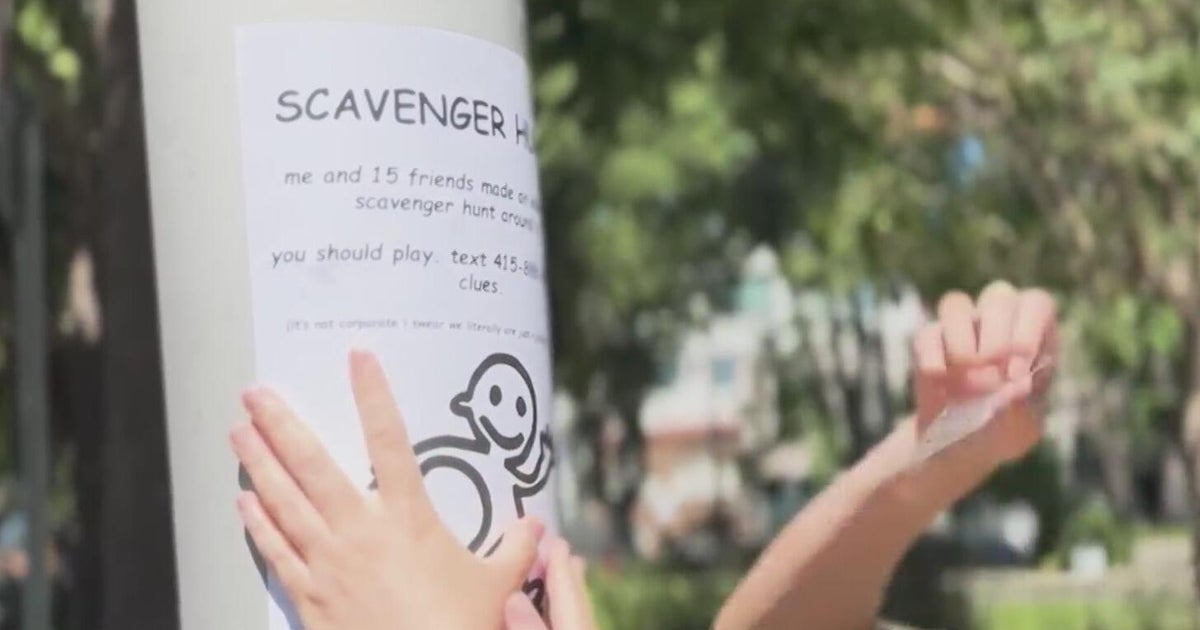Coveted Environmental Prize Winners To Be Honored In San Francisco
SAN FRANCISCO (KCBS/AP) - A veteran conservationist from Zimbabwe who has worked to protect African rhinos will be among the recipients of an international environmental award from a San Francisco-based group.
Raoul Du Toit was named Monday among six recipients of the 2011 Goldman Environmental Prize. It's the most prestigious award given annually to grassroots environmentalists from each of the world's six geographic regions.
A ceremony honoring award winners was scheduled for Monday evening at the San Francisco Opera House on Van Ness Ave.
All six recipients would claim their $150,000 prize for helping to make the planet safer and more sustainable at the ceremony.
KCBS' Tim Ryan Reports:
Du Toit heads a rhino conservation project in southern Zimbabwe that has helped rebuild and maintain the highest population of rhino in the southern African nation.
The endangered African rhinoceros isn't like a prehistoric dinosaur on the verge of extinction. It is robust in its natural habitat, it is disease resistant and breeds well when protected from poachers, said du Toit.
"If you can keep the poachers away, rhinos can look after themselves extremely well," he said.
Years of political and economic turmoil and a breakdown in law and order has seen a surge in poaching not only of rhino but of all species of Zimbabwe's wildlife.
But in the massive southern district where du Toit's Lowveldt Rhino Trust operates, headway is being made - 21 rhinos were killed for their horn there last year, compared to 71 in 2009.
The powdered rhino horn is used in centuries-old healing remedies in China and elsewhere in Asia. The new worry, du Toit told the Associated Press, is rapidly increasing demand in Vietnam where it is now believed to be a cure for cancer.
"This has to be addressed. In Western medicine, tests have been done to show it has no medicinal properties," he said.
The horn is of the same compacted fibers found in human fingernails. In Vietnam it can fetch up to $40,000 a kilogram (2.2 pounds).
Like fingernails, rhino horn re-grows but dehorning programs and sales of horns taken from animals dying from natural causes have further fueled demand and spurred poaching.
Du Toit said there have been recent experiments to inject poison into the horns of live rhino to deter poaching, but the act raises more ethical questions.
"Rhinos have been given such a bad deal by the human race, but there are moral concerns about hitting back" with this method, he said. In any case, crushed rhino horn mixed with many other elements would not be fatal if the poison was diluted.
The Lowveldt Rhino Trust has launched community programs to protect the 530 rhino surviving in the southern district. They encourage villagers to report suspicious movements of strangers. In return, teaching aids are given to local schools that include conservation themes in geography, English and infants' math class.
The trust will use the $150,000 Goldman prize money to develop these programs to build "protective community screens" around rhino habitats that will encourage natural breeding. Impoverished community schools are rewarded for every calf born in the wild nearby with additional materials, funding and even scholarships for deserving pupils.
"It won't be infallible because poachers shoot in and shoot out again, but locals helping poachers soon become pariahs," said du Toit.
Captive breeding of rhino has never yielded good results, he said.
Poachers often deal with international syndicates, mainly through neighboring South Africa, and are well-armed and equipped, with mobile phones, vehicles and sometimes even air reconnaissance.
Once lenient penalties for poaching have been made more severe and anti-poaching efforts have had some success.
Experienced poachers get up to $3,000 a kilogram of horn, nearly one tenth of the value in Asia, and count bribes among their overhead costs. Some are known to have diversified into running drugs too.
"The penalties and fines are still not as much as we would like to see and some of those caught go back and shoot more rhinos to pay legal fees and bribes. That's the blowback from efforts to deal with them," said du Toit.
Environmentalists like du Toit say investment in rhino conservancies and wildlife preserves is the longer term aim to protect the animals and give their very existence economic value.
But Zimbabwe's chaotic and often violent seizures of white-owned farms _ with some white-owned nature conservancies targeted for occupation by black Zimbabweans _ still pose a threat to the iconic rhino. Political disorder also has paralyzed the nation's once thriving tourist industry over the past decade.
For more than 25 years du Toit has been up close and personal with his beloved rhino and the other giants of the African bush. His admiration for the world's second largest land mammal after the elephant is unbridled.
Both the black rhino, the most endangered, and the more common species of white rhino are actually gray but have different distinguishing features. About 4,800 black, or hook lipped rhino, survive across Africa, along with about 20,000 white, or square lipped rhino.
Left unthreatened, rhinos can breed to increase their numbers by 10 percent as females calve every two years. Nor do they require large amounts of water in arid areas.
Rhinos relocated by conservationists to safer areas pine for former herd members left behind and males search over long distances to reunite with a female they have been separated from.
Poachers recently wounded a cow rhino and she abandoned her newborn calf. However, she soon returned to suckle the calf, stopping du Toit's group from the difficult task of trying to hand rear the weeks-old baby.
Rhinos often revisit the body of a slain "companion" and "the poachers know that too" and can lie in wait for another kill.
"Rhinos are creatures of habit and that's part of their downfall," said du Toit.
(Copyright 2011 by CBS San Francisco. All Rights Reserved. This material may not be published, broadcast, rewritten, or redistributed. Wire services may have contributed to this report.)



